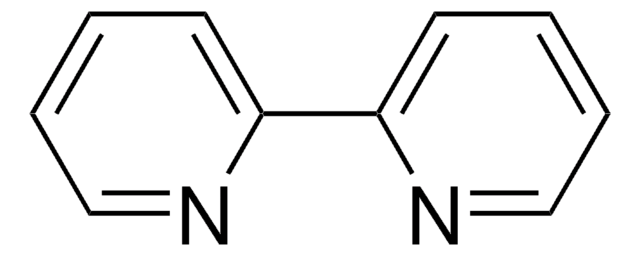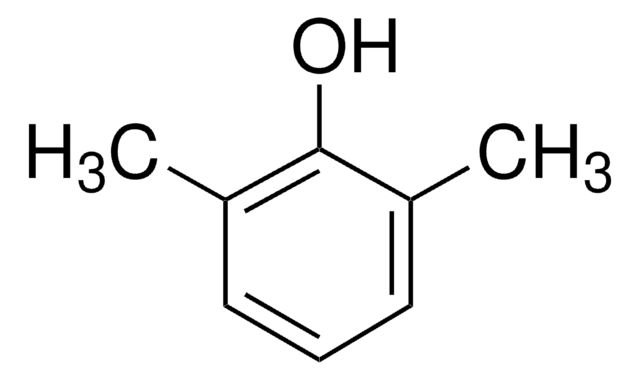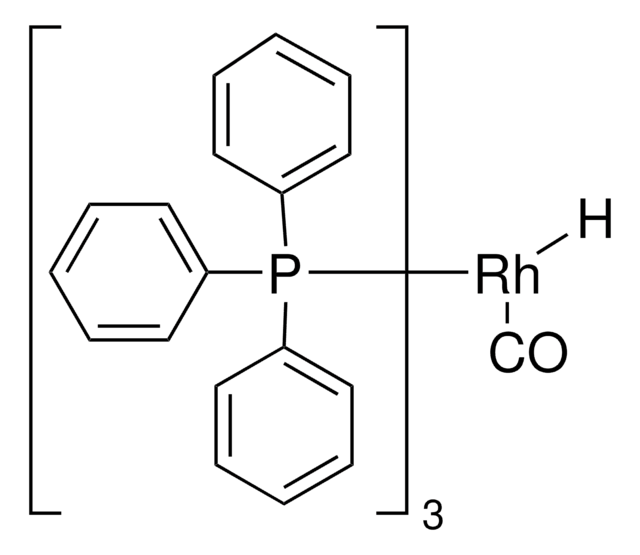212946
Copper(I) chloride
reagent grade, 97%
동의어(들):
Copper monochloride, Cuprous chloride
로그인조직 및 계약 가격 보기
모든 사진(3)
About This Item
Linear Formula:
CuCl
CAS Number:
Molecular Weight:
99.00
EC Number:
MDL number:
UNSPSC 코드:
12352302
PubChem Substance ID:
NACRES:
NA.55
solubility:
dimethyl sulfide: partially soluble(lit.)
water: insoluble(lit.)
water: insoluble(lit.)
추천 제품
Grade
reagent grade
Quality Level
vapor pressure
1.3 mmHg ( 546 °C)
분석
97%
양식
powder
반응 적합성
reagent type: catalyst
core: copper
pH
5 (20 °C, 50 g/L)
bp
1490 °C (lit.)
mp
430 °C (lit.)
solubility
dimethyl sulfide: partially soluble(lit.)
water: insoluble(lit.)
SMILES string
Cl[Cu]
InChI
1S/ClH.Cu/h1H;/q;+1/p-1
InChI key
OXBLHERUFWYNTN-UHFFFAOYSA-M
유사한 제품을 찾으십니까? 방문 제품 비교 안내
일반 설명
Cu is present in +1 (cuprous) valence state in CuCl. CuCl is a semiconductor having a wide band gap. It is a promising candidate for use in silicon-based optoelectronics since its lattice resembles with silicon. It participates in various reactions with Grignard reagents.
애플리케이션
Copper(I) chloride (Cuprous chloride, CuCl) has been used to synthesize 7-((tert-butyldimethylsilyl)oxy)hepta-2,4-diyn-1-ol. CuCl may be used in the stereospecific synthesis of cyclic conjugated dienes. It may be employed as a reactant to investigate the stability of copper chloride complexes in hydrothermal solutions.
Shows unique character as an initiator of radical reactions such as the hydrostannation of α,β-unsaturated ketones.
신호어
Danger
유해 및 위험 성명서
Hazard Classifications
Acute Tox. 4 Dermal - Acute Tox. 4 Oral - Aquatic Acute 1 - Aquatic Chronic 1 - Eye Dam. 1 - Skin Irrit. 2
Storage Class Code
8A - Combustible corrosive hazardous materials
WGK
WGK 3
Flash Point (°F)
Not applicable
Flash Point (°C)
Not applicable
이미 열람한 고객
Copper (I) chloride-mediated intramolecular coupling of vinyltrimethylstannane and vinyl halide functions.
Piers E and Wong T.
The Journal of Organic Chemistry, 58(14), 3609-3610 (1993)
Copper (I) Chloride.
Bertz SH, et al.
e-EROS Encyclopedia of Reagents for Organic Synthesis. (2007)
Experimental study of copper (I) chloride complexing in hydrothermal solutions at 40 to 300 ?C and saturated water vapor pressure.
Xiao Z, et al.
Geochimica et Cosmochimica Acta, 62(17), 2949-2964 (1998)
Beeraiah Baire et al.
Nature protocols, 8(3), 501-508 (2013-02-16)
The hexadehydro-Diels-Alder (HDDA) cascade enables the synthesis of complex benzenoid products with various substitution patterns through aryne intermediates. The first stage of this cascade involves the generation of a highly reactive ortho-benzyne intermediate by a net [4+2] cycloisomerization of a
N Raman et al.
Spectrochimica acta. Part A, Molecular and biomolecular spectroscopy, 79(5), 873-883 (2011-05-10)
A new ligand [C28H20N6O8] (L2) has been synthesized by the condensation reaction of 3-hydroxy-4-nitrobenzaldehydenephenylhydrazine (L1) with diethyloxalate. This ligand L2 is allowed to react with bis(ethylenediamine)Cu(II)/Ni(II)/Zn(II) complexes. It affords [(L2)Cu(en)2]Cl2(1)/[(L2)Ni(en)2]Cl2(2)/[(L2)Zn(en)2]Cl2(3) complexes, respectively. These complexes (1-3) have been characterized by the
자사의 과학자팀은 생명 과학, 재료 과학, 화학 합성, 크로마토그래피, 분석 및 기타 많은 영역을 포함한 모든 과학 분야에 경험이 있습니다..
고객지원팀으로 연락바랍니다.









